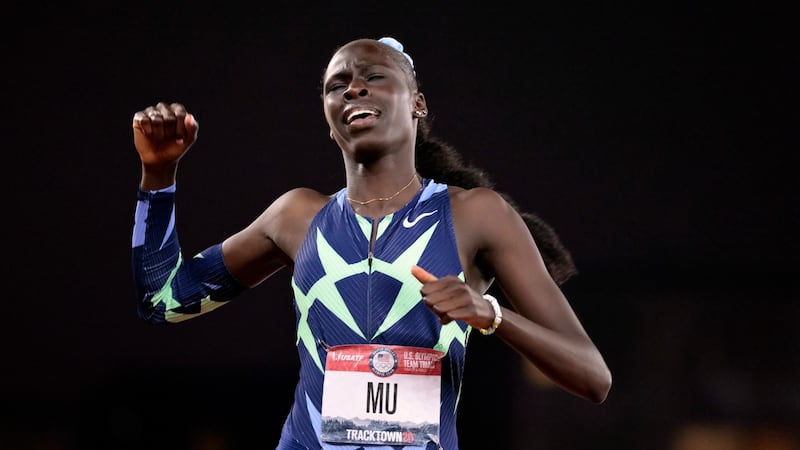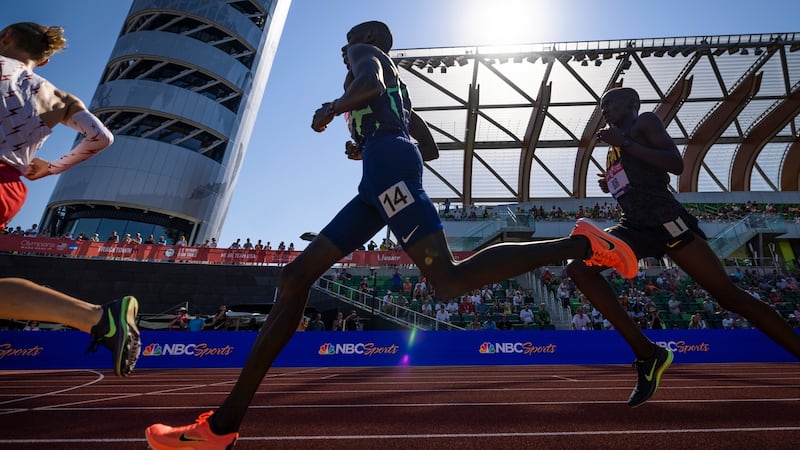After 10 days in the constantly rising heat of Eugene, Oregon, it's safe to say that, as final tests runs for Tokyo go, few events can rival the US Olympic trials.
The entire schedule is run off a template similar to the Olympics. The intention isn’t just to select the US team, but give athletes a flavour of what lies ahead in preparing for heats, semi-finals and finals across all events – and what will likely be stifling heat in Tokyo too.
Over 10 days, with two rest days, everyone gets a true feel for the tolerance required by athletes and support staff of an Olympic schedule – even more so this time round given the many Covid-19 protocols and hurdles to cross just to travel and enter the Olympic village and travel between venues.
For athletes at the trials, there was a requirement to get a Covid-19 test every 48 hours if you were inside the athlete bubble; once athletes were finished their events their accreditation was cancelled so the only access to the stadium was with a ticket.
Spectators were divided into “vaccinated” and “unvaccinated” sections, where you had to show your card or update an app to get the green light for entry to the stadium each day. Few complaints there, seemingly.
Then came the injection of extreme heat during the second half of the trials, where again athletes got a taste of what may lie ahead in Tokyo. By Sunday’s final day, the temperatures reached 46 degrees and an even greater heat index when out in the direct sun. The women’s 10,000m final and men’s 5,000m final were moved to the morning, to avoid the build-up of heat throughout the day, but it was still over 30 degrees when these races were run at 10am.
Hottest part
On the final day of competition the evening programme was set to begin at 4pm, many races running into the hottest part of the day. I was staying in a house up on a hill just over a mile from the stadium with a few of our athletes and support staff. We could see the lights of the stadium at night and, with the limited spectators and people in town, it was an easy drive to the track to drop off and pick up.
On Sunday it felt like walking into an oven, the heat was that intense. Athletes prepared as normal, but by the time I got back up to the house there was a call to say everything was postponed for five hours until the sun went down and with it a drop in temperature. All the timing of waking up, eating, counting down the hours, staying calm had to be thrown out the window and preparation reset.
We watched a movie with the air-conditioning on full to try to distract and come down from the already built-up adrenalin and focus. It’s a rare thing for athletes to have to deal with and would surely test the mental strength of athletes as they had to prepare for the most important race, one that would determine their Olympic fate. Only the top three progress to Tokyo (provided they have the qualifying standard) – no exceptions, no excuses and no second chances.

Finally, at 8pm, it was time to return to the track and think like this was just the beginning once more on an already long day on the back of 10 long days of competition.
As anyone who has ever been to an athletics championship will know, the energy and excitement starts to wear off as the days go by; not here, a preview perhaps to what lies ahead at the Olympic Games that are now a reality for athletes after so much uncertainty over the past year.
Wildest night
The change of schedule certainly made a difference, temperatures now in the mid-30s, but the sun was down and the night was set for one of the wildest nights of athletics to cap off the US team selection.
Some of the performances were run off the charts: the women's 400m hurdles set the stage, an intense battle between Dalilah Muhammad and Sydney McLaughlin. Muhammad set up the race for a fast time and was leading off the ninth hurdle into the straight only for McLaughlin to ease past and not just win the race but take the world record from Dalilah. It was a shock to see the clock flash up 51.90 seconds, the first time any female got under 52 seconds for 400m hurdles. The second world record of the trials, not set up or promoted, just racing to get a place on the Olympic team.
It took a few minutes for people to realise the historic moment they were witnessing, with just over 6,000 spectators in the 12,900-capacity stadium.
In the women's 800m we got to see 19-year-old Athing Mu, just signed with Nike after one year of college athletics. Here she focused on the 400m at the very same track in the NCAA Championships just two weeks ago, and returned to the 800m to smash her personal best of 1:56.07 – the fastest time in the world this year – and rip the field apart. No problem skipping through the rounds, setting a trials record in the process.
Shoe technology
I never really questioned the performances, probably in acceptance of the shoe technology now, and there is no stopping progress at this level. More athletes certainly run faster at a level that only a few would have run in the past, so with this in mind it will be interesting to see how Irish athletes fare in the competition in Tokyo when the importance is on place rather than time.
The depth in events is so great, with college athletes stepping up without any fear of their older rivals and snatching up places on the Olympic team. Cole Hocker, the local favourite from the host University of Oregon, turned the tables on Olympic champion Matt Centrowitz, winning the trials, the world rankings update needed to confirm his place on the US team, third place going to Yared Nuguse of Notre Dame University who set the collegiate record this year at 3:34.68.

While many athletes were chasing times in the final days before the Olympic deadline, the US athletes were ultimately required to finish in the top three to claim their place. It certainly changes the perspective for the spectators, because every race means so much and can change the career of an athlete in a split second.
Not every country has the luxury of such high-level competition, and with a month to go there is time to recover, reset and build back up. Safe to say too that after 10 days in Eugene, few athletes will be better prepared for what’s to come in Tokyo than the US Olympic track and field team.















